The Beauty of Typewriters
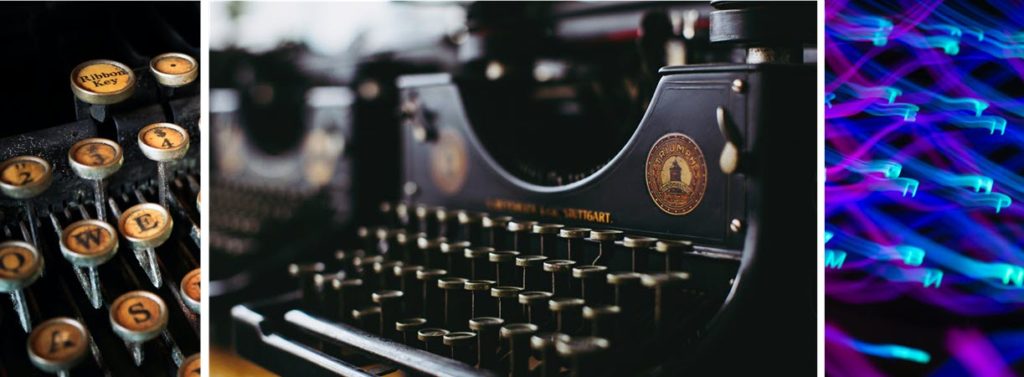
” ‘The quick brown fox jumped over the lazy dog.’ This panagram—a sentence that uses all of the letters of the English-language alphabet—was typically used in touch-typing practice to test mechanical keyboards.”
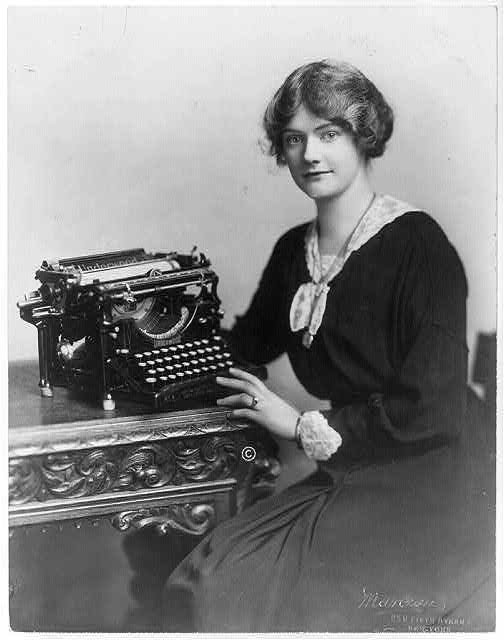

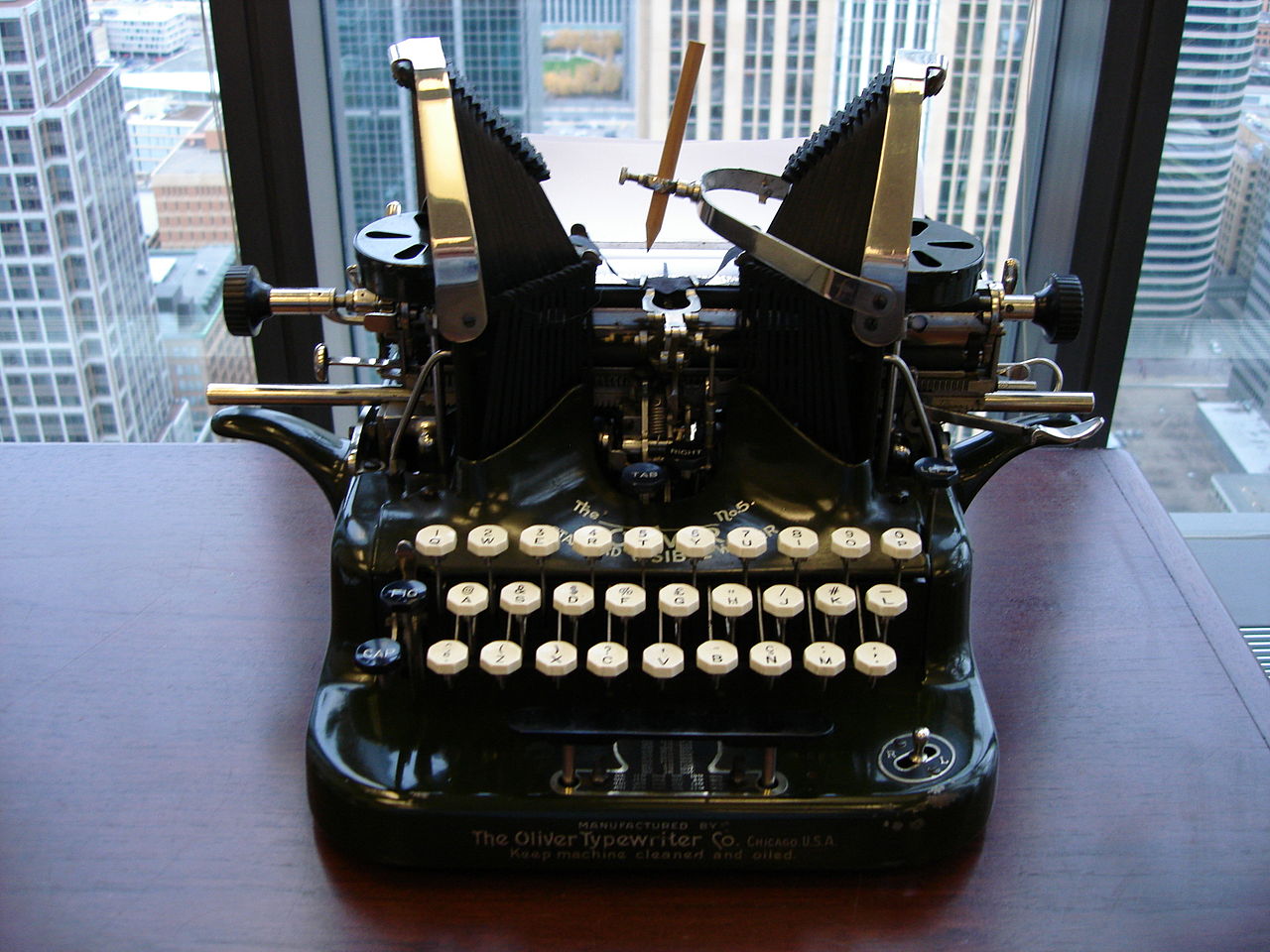
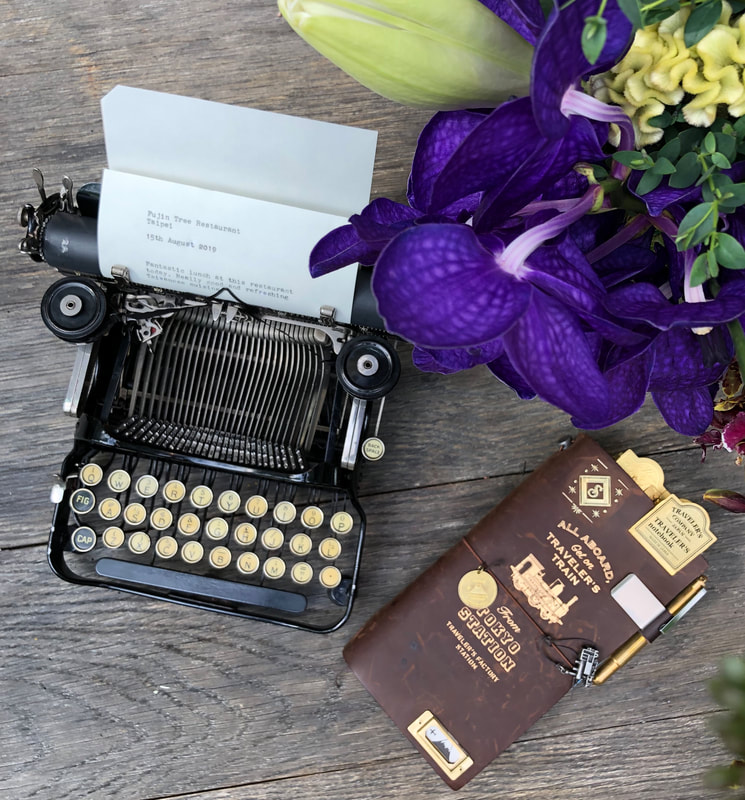
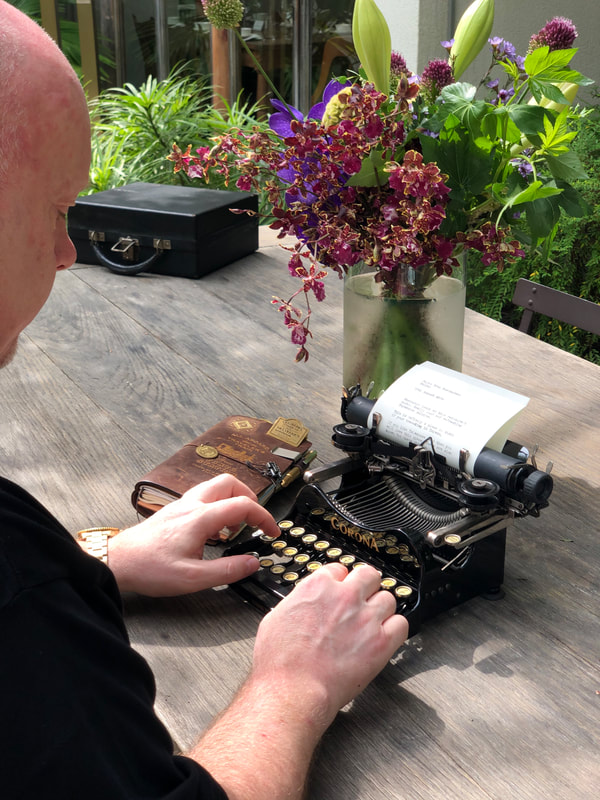
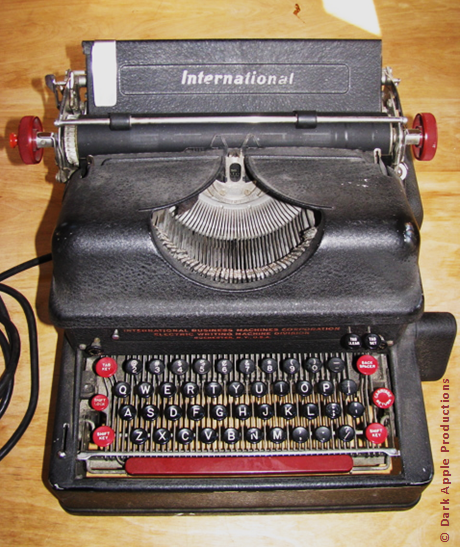
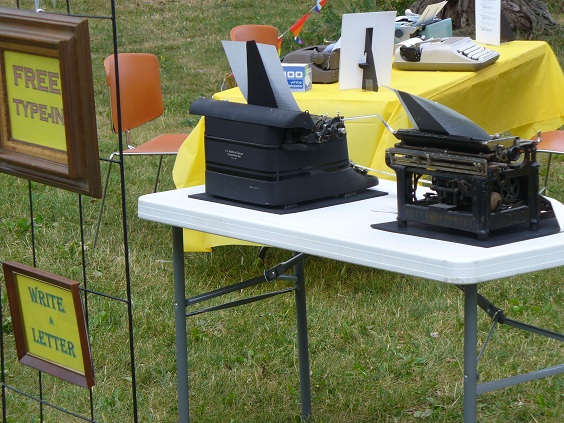
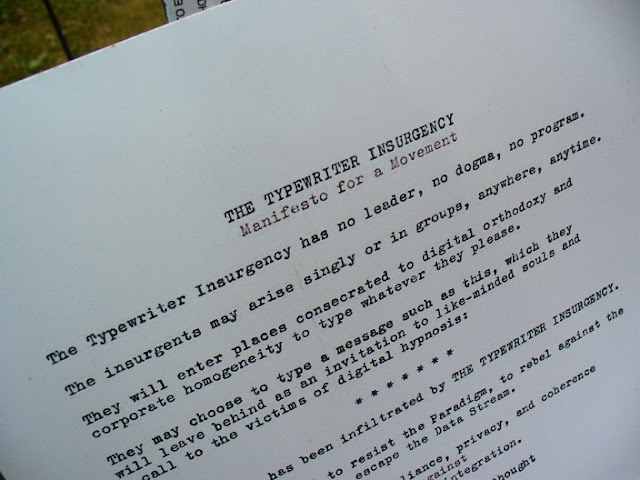



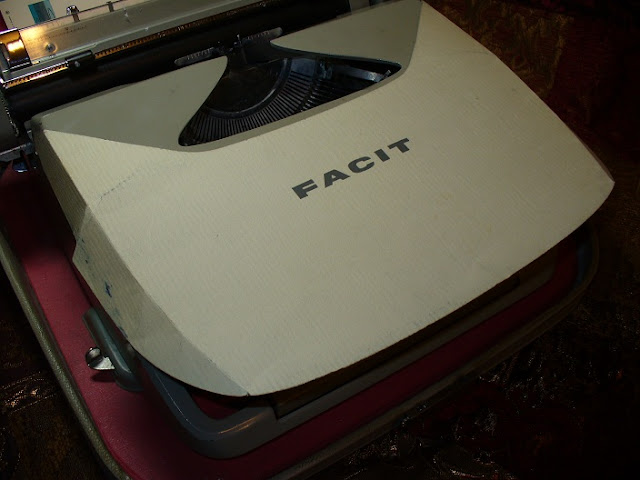
Once an academic librarian who used 21st-century information technology easily, some ten years ago I found myself part of something called the Typosphere.
A term for bloggers who collect, use, and otherwise obsess over typewriters and other ‘obsolete’ technologies, including, but not limited to, handwriting, pens and ink, paper mail and mail art, knitting and fibre arts, film photography, chip-less combustion engines, and related ephemera. Though typically reclusive, members of the typosphere can sometimes be found lurking around the fringes of rummage sales, swap meets, flea markets, and church fundraisers, hoping to find the one make, model, or color typewriter that will finally complete their collection and bring them true happiness and satisfaction. None have managed this feat yet. [1]
But I missed it and missed the joy of physically making words with a metal machine. Although I’m a writer and not a curator, I briefly became a collector and for several years owned about 25 typewriters.
The oldest was an early 1900s Oliver 3, a machine that looks like it can fly! (The image here is of the very similar Oliver 5.) The newest was an electric Smith Corona SL 470 from the 1980s that had once belonged to my husband’s grandmother. The oddest was a 1930s Corona 3 that was designed to fold in half when not in use. The laptop of its day, its light weight and convenient portability made it the machine of war correspondents and writers. By contrast, the heaviest was a 1940s IBM Electromatic. Family lore is that my Dad sold these when he worked for IBM way back when. We think the one in this image is from his sales inventory.
For a couple of years I enjoyed letting others play with my collection of typewriters. In my alter ego as Professor Remington I hosted type-ins, an event where people bring their typewriters to an entertaining location, such as a library, bookstore, or park and share the fun with passersby. One such event was part of the City of Madison’s (WI) annual Summer Solstice celebration. I set out a range of my machines on some tables along with a copy of the Typewriter Insurgency Manifesto [2] displayed on the platen roll of a non-working desk typewriter. The best part of it was the families and watching the excitement of the parents as they showed their kids the machines they used before computers.
I held another type-in a couple years later, using our neighborhood’s annual group rummage sale as an opportunity to sell some machines, though for me it was more like sending them off to good homes. One young man, who told me he was an aspiring journalist, was happy with the machine used by many journalists, a Facit TP1, the so-called “Prince of Typewriters.” [3] A mother and her three children were so excited about having a “family writing machine.” And as always, the children were fascinated by these mechanical pieces of history.
Typewriters as Agents of Change
According to American typewriter collector (and University of Cincinnati professor of philosophy), Richard Polt, “the concept of the typewriter dates back to at least 1714.” [4] Polt further notes that what seems to have been the first actually working typewriter was made in Italy in 1808. Christopher Sholes, a “Milwaukee newspaperman, poet, and part-time inventor,” is credited as one of the first inventors of the commercial typewriter, although it was E. Remington & Sons who initially marketed the machines. The introduction of commercial typewriter, like the development of the laptop and tablet computers, revolutionized the worlds of printing, business, and personal and professional writing. [5][6]
And typewriters aren’t just pieces of history, they have made history. The introduction of this new-fangled technology in the late nineteenth-century created a revolution in the traditional man’s world of business and industry. British journalist, Lucy Kellaway noted “The typewriter is almost obsolete in the modern office. But it played a crucial role in women’s arrival in the workplace.” [7] “Typewriting girls” they were referred to, women who assumed the often boring task of mechanically transcribing the ever-increasing stacks of information, reports, administrative documents, and letters. Kellaway observed that
This feminisation of office work happened incredibly fast. Until the late 19th Century there were no women in offices at all. In 1870, there were barely a thousand of them. By 1911 there were 125,000 and by 1961 there were 1.8 million, in 2001 there were 2.5 million female clerks. [8]
Typewriters in Education
“The quick brown fox jumped over the lazy dog.” This sentence about the fox and dog—called a pangram, a sentence that uses all of the letters of the English-language alphabet—was typically used in touch-typing practice to test mechanical keyboards. Typewriter collectors often will type this sentence as a way of checking to see if all the letter keys of a machine they want to buy are functioning. A veteran once told me that his go-to sentence in school was “Now is the time for all good men to come to the aid of their country.” It’s a good sentence, but not one that lets one test one’s alphabet keys!
While most computer keyboards are standardized now, in the past the keys varied, depending on the age and purpose of the machine. The typewriter I learned to type on as a high school junior had the standard American QUERTY keyboard but was missing keys for the number 1 and the exclamation point (!). A lower case “L” was used for the number; while creating the exclamation point took three steps: typing an apostrophe, back-spacing once, and then typing a period. I have a 1929 portable that I bought from a WWII veteran. He told me he had used his GI Bill bonus to pay for an engineering degree and the typewriter he sold to me. It had several keys with fractions on the keyboard as well as a “+” sign.
I learned from a 90-something woman who had made her living as a secretary that the typewriters used in her long ago business skills class all had blank keys. This forced the women (and they were all women then) to learn to touch-type, that is, to type without looking at the keys. The lady proudly told me that she got an A in the course and was able to type 90-100 words per minute throughout her career. The Facit TP1 mentioned above had its original hide-the-hands pasteboard shield when I found it. According to the instruction card the newbie typist was to place this shield as shown in the image at left. I tried this but my hands are fairly large and I was unable to type without knocking the shield off.
Typewriters, Buying & Selling
While I still have a couple of machines that I use to write letters, I no longer collect typewriters and have sold or given most of them away. But am often asked about how one goes about finding or selling typewriters. Here are the links I send along.
Please Note: I no longer buy or sell typewriters. Nor do I appraise them. If you are interested in learning more about these lovely machines and, see the following websites.
-
- The Classic Typewriter Page | Richard Polt
- Machines of Loving Grace | Alan Seaver
- Oz Typewriter | Robert Messenger
HOW TO CITE THIS POST
Jablonski, J.A. (2021, Oct 11). The Beauty of Typewriters. Blog post. J.A. Jablonski (website). https://jajablonski.com/2021/10/11/beauty-of-typewriters/
IMAGE CREDITS
Header Image
-
- Left | Old typewriter keys | Photo by Samuel Ramos on Unsplash
- Center Vintage Typewriter – Triumph | Photo by Markus Spiske on Unsplash
- Right | Neon letter keys | Photo by Anton Maksimov juvnsky on Unsplash
Woman with an Underwood typewriter, c. 1918. By Theodore C. Marceau. Library of Congress: Information Direct, Public Domain, https://commons.wikimedia.org/w/index.php?curid=10047423
1964 Royal Empress Typewriter #MCE-117931113. From the Collection of James Fifford. The Tyepwriter Database. https://typewriterdatabase.com/1964-royal-empress.9155.typewriter
Oliver Typewriter model No. 5. by Elcobbola at English Wikipedia. Public Domain. https://commons.wikimedia.org/wiki/File:Oliver_Typewriter_No._5.JPG
Two images of a 1922 Corona 3 Typewriter. From collection of Steve Parry. https://typewritertraveler.
IBM Electromatic typewriter. Photo by Lou Host-Jablonski. Dark Apple Productions. Used by permission.
All type-in and rummage sale type-in photos taken by J.A. Jablonski. The mother in the group shot gave permission for her children’s image to be posted online.
Black and white diagram of QUERTY computer keyboard. Public Domain. https://commons.wikimedia.org/wiki/File:QWERTY_keyboard_diagram.svg
Facit TP1 cardboard keyboard cover. Photo by J.A. Jablonski.
Sources
[1] Clemens, Mike. (n.d.). What is the Typosphere? (blog post). Welcome to the Typosphere.
[2] Polt, Richard. (n.d.) Typewriter Insurgency Manifesto. Multi-language versions. | Updated version from his The Typewriter Revolution: A Typist’s Companion for the 21st Century. Countryman Press, 2015.
[3] Messenger, Robert. (30 October 2011). Facit TP1 portable – The Prince of Typewriters. (blog post). Oz Typewriter.
[4] Polt, Richard. (n.d.). A Brief History of Typewriters. The Classic Typewriter Page.
[5] Olson, J.S. & Kenny, S. (2014). The Industrial Revolution: Key Themes and Documents (Unlocking American History). Santa Barbara, CA: ABC-CLIO, p. 216.
[6] Jacob T. (n.d.). The Invention of Typewriters and Its Effect on 19th Century America. (web article)
[7] [8 ] Kellaway, L. (2013). The Arrival of Women in the Office. [edited transcript]. BBC News Magazine.


